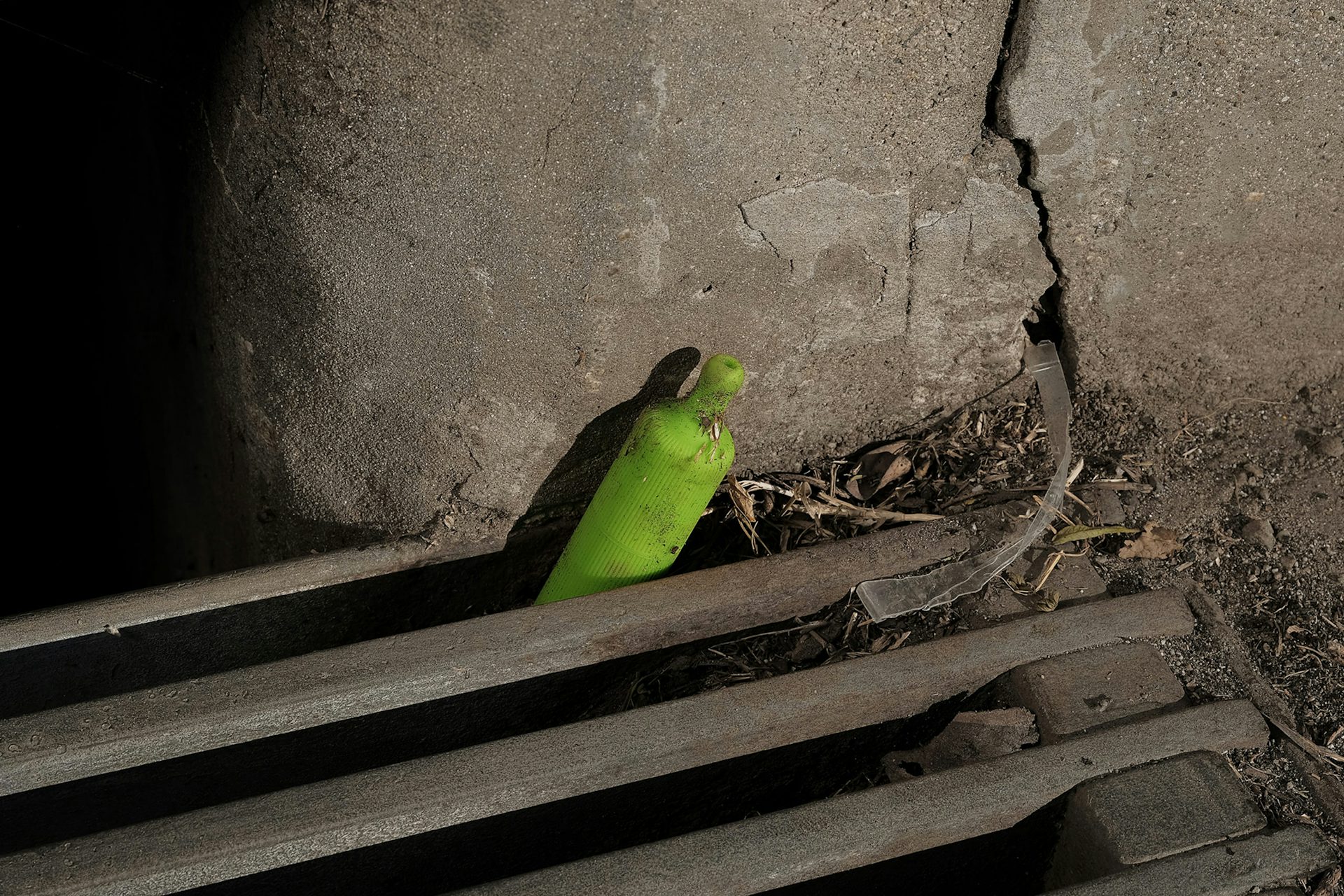Vapes: 3 types of toxic waste in 1

What many people don’t know is that tobacco product waste from cigarette butts is one of the most common forms of plastic waste found.12 And, thanks to the tobacco industry, there is now even work to do because a new threat is facing our environment’s vape waste. Vape waste creates huge environmental issues:
- Increase in single-use plastics
- Increase in plastic pollution
- Increase in tech waste from vape parts, including lithium-ion batteries
- Introduction of toxic chemicals into the environment when discarded
How do vaping products generate more single-use plastics?
Many vape products, like Juul, use plastic pods or cartridges to hold the e-juice. With these products, users replace the pods when the e-juice is used up. But these pods can’t be recycled with other plastic waste because they contain nicotine, which is hazardous waste.6 They also have other toxic chemicals in them. If pods and cartridges are discarded as litter, they may leak nicotine and other toxic chemicals into the environment or be eaten by wildlife or pets. Research has shown that even very small amounts of nicotine can be harmful or even lethal to animals.7
Disposable pods can’t be recycled with other plastic waste because they contain nicotine, which is hazardous waste.
How does vape waste create microplastics?
When pods, cartridges, and other plastic vape waste is discarded, that plastic eventually breaks down into smaller and smaller pieces of plastic called microplastic.10 Unlike a banana peel or eggshell, these tiny particles of plastic aren’t harmless or biodegradable. Instead, they can end up polluting our oceans due to storms, wind, and other water runoff. Microplastics have been found in marine wildlife and even our drinking water.11

Cigarette butts also contain microplastics that contaminate our soil, food, and water.
How does vape waste increase tech waste?
Disposing of e-waste is a considerable challenge due to the many different types of chemicals and materials in these products. Vapes present at least two problems, as their vaporizers contain a circuit board, which can contain plastics and heavy metals.14 They also use lithium-ion batteries. But many vape products and accessories are being thrown away in the garbage or worse, dumped as litter.15 As batteries degrade, they can leach their chemicals into the environment. And if they are put in garbage or trash receptacles, they pose a fire risk in waste and recycling facilities if damaged or exposed to high heat, putting workers’ safety at risk.16

Which of these statements about discarded vapes is true?
What can be done?
First off, if you vape, quit. It will protect your health and protect the environment. If you need help to quit, Kick It California now has free vape quitting services, including an app. Visit KickItCA.org for more information.
Additionally, if you are interested in getting involved in your community’s efforts to combat tobacco product waste, join your local coalition.
- Ocean Conservancy, International Coastal Cleanup. We Clean On, 2021 report. Washington, DC: Ocean Conservatory, International Coastal Cleanup; 2021.
- Novotny TE, Lum K, Smith E, Wang V, Barnes R. Cigarettes butts and the case for an environmental policy on hazardous cigarette waste. Int J Environ Res Public Health. 2009;6(5):1691-1705. doi:10.3390/ijerph6051691.
- World Wildlife Federation. The lifecycle of plastics. WWF. https://www.wwf.org.au/news/blogs/the-lifecycle-of-plastics. Published July 2, 2021. Accessed January 14, 2022.
- Fowles J, Barreau T, Wu N. Cancer and Non-Cancer Risk Concerns from Metals in Electronic Cigarette Liquids and Aerosols. Int J Environ Res Public Health. 2020;17(6):2146. doi:10.3390/ijerph17062146.
- Hendlin YH. Alert: Public Health Implications of Electronic Cigarette Waste. Am J Public Health. 2018;108(11):1489-1490. doi:10.2105/AJPH.2018.304699.
- Environmental Protection Agency (1980). CFR §261.33 Discarded commercial chemical products, off-specification species, container residues, and spill residues thereof. https://www.govinfo.gov/content/pkg/CFR-2012-title40-vol27/pdf/CFR-2012-title40-vol27-sec261-33.pdf.
- Novotny TE, Hardin SN, Hovda LR, Novotny DJ, McLean MK, Khan S. Tobacco and cigarette butt consumption in humans and animals. Tob Control. 2011;20 Suppl 1(Suppl_1):i17-i20. doi:10.1136/tc.2011.043489.
- Mock J, Hendlin YH. Notes from the Field: Environmental Contamination from E-cigarette, Cigarette, Cigar, and Cannabis Products at 12 High Schools — San Francisco Bay Area, 2018–2019. MMWR Morb Mortal Wkly Rep 2019;68:897–899. DOI: http://dx.doi.org/10.15585/mmwr.mm6840a4.
- Kaplan S. Teens Find a Big Loophole in the New Flavored Vaping Ban. The New York Times. https://www.nytimes.com/2020/01/31/health/vaping-flavors-disposable.html. Published January 31, 2020. Accessed July 24, 2020.
- A toxic, plastic problem: E-cigarette waste and the environment. Truth Initiative. https://truthinitiative.org/research-resources/harmful-effects-tobacco/toxic-plastic-problem-e-cigarette-waste-and-environment. Accessed December 16, 2021.
- World Health Organization. Microplastics in drinking-water. Geneva: World Health Organization; 2019. Licence: CC BY-NC-SA 3.0 IGO.
- Lim XZ. Microplastics are everywhere - but are they harmful? Nature News. https://www.nature.com/articles/d41586-021-01143-3. Published May 4, 2021. Accessed December 16, 2021.
- Lim XZ. Microplastics are everywhere - but are they harmful? Nature News. https://www.nature.com/articles/d41586-021-01143-3. Published May 4, 2021. Accessed December 16, 2021.
- Hendlin YH. E-cigarettes and a new threat: How to dispose of them [blog]. The Conversation. https://www.universityofcalifornia.edu/news/e-cigarettes-and-new-threat-how-dispose-them. Published October 23, 2018. Accessed July 7, 2020.
- Mock J, Hendlin YH. Notes from the Field: Environmental Contamination from E-cigarette, Cigarette, Cigar, and Cannabis Products at 12 High Schools — San Francisco Bay Area, 2018–2019. MMWR Morb Mortal Wkly Rep 2019;68:897–899. DOI: http://dx.doi.org/10.15585/mmwr.mm6840a4.
- Forster M. What Happens When You Throw Away E-Cigarettes? Waste Management Magazine. https://wasteadvantagemag.com/what-happens-when-you-throw-away-e-cigarettes/. Published November 21, 2018. Accessed July 8, 2020.
- Environmental Protection Agency (1980). CFR §261.33 Discarded commercial chemical products, off-specification species, container residues, and spill residues thereof. https://www.govinfo.gov/content/pkg/CFR-2012-title40-vol27/pdf/CFR-2012-title40-vol27-sec261-33.pdf
- Krause MJ, Townsend TG. Hazardous waste status of discarded electronic cigarettes. Waste Manag. 2015;39:57-62. doi:10.1016/j.wasman.2015.02.005.
- Kang DH, Chen M, Ogunseitan OA. Potential environmental and human health impacts of rechargeable lithium batteries in electronic waste. Environ Sci Technol. 2013;47(10):5495-5503. doi:10.1021/es400614y.
- Novotny TE, Slaughter E. Tobacco Product Waste: An Environmental Approach to Reduce Tobacco Consumption. Curr Environ Health Rep. 2014;1(3):208-216. Published 2014 May 6. doi:10.1007/s40572-014-0016-x.
- Creamer MR, Wang TW, Babb S, et al. Tobacco Product Use and Cessation Indicators Among Adults — United States, 2018. MMWR Morb Mortal Wkly Rep 2019;68:1013–1019. DOI: http://dx.doi.org/10.15585/mmwr.mm6845a2.
- Park-Lee E, Ren C, Sawdey MD, et al. Notes from the Field: E-Cigarette Use Among Middle and High School Students — National Youth Tobacco Survey, United States, 2021. MMWR Morb Mortal Wkly Rep 2021;70:1387–1389. DOI: http://dx.doi.org/10.15585/mmwr.mm7039a4.
- Pourchez J, Mercier C, Forest V. From smoking to vaping: a new environmental threat? Lancet Respir Med. 2022;10(7):e63-e64. doi:10.1016/S2213-2600(22)00187-4
- Williams M., Bozhilov K., Ghai S., Talbot P. Elements including metals in the atomizer and aerosol of disposable electronic cigarettes and electronic hookahs. PLoS ONE. 2017;12:e0175430. doi: 10.1371/journal.pone.0175430.
- Zhao D, Aravindakshan A, Hilpert M, et al. Metal/Metalloid Levels in Electronic Cigarette Liquids, Aerosols, and Human Biosamples: A Systematic Review. Environ Health Perspect. 2020;128(3):36001. doi:10.1289/EHP5686.
Explore by topic
